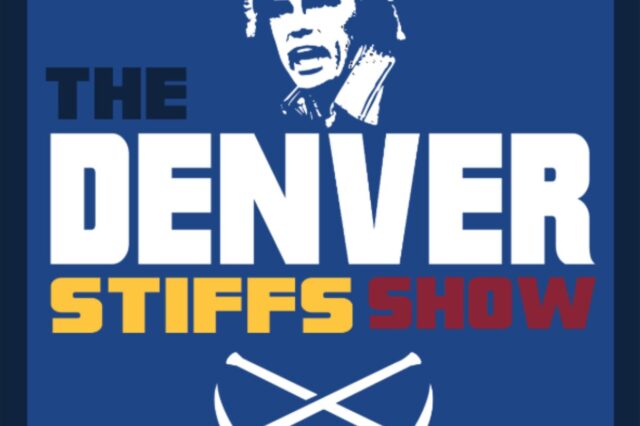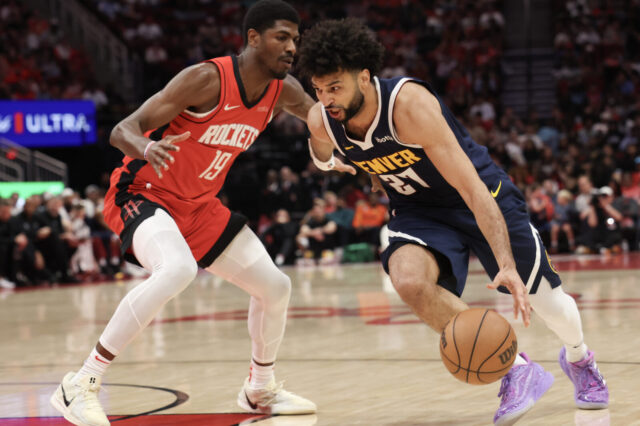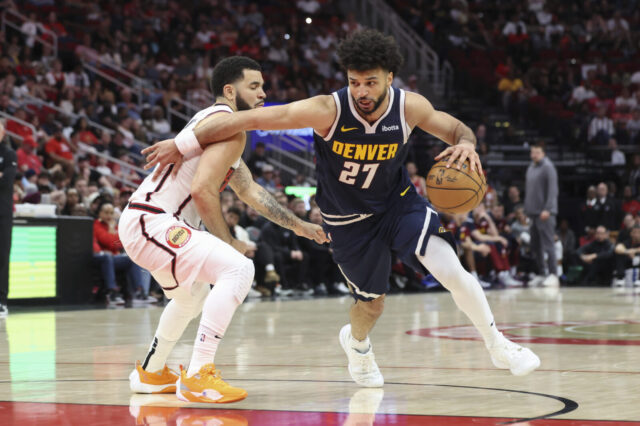If you’re not familiar with Film Fridays, each Friday, I’ll be looking at some recent Denver Nuggets’ games, lineups or something else from a film aspect to try and bring you a piece of content that you’re not getting somewhere else. Feel free to give any feedback positive or negative in the comments or find me on Twitter.
Upon his arrival from the Orlando Magic, forward Aaron Gordon looked like the missing piece for the Nuggets. He brought a slashing component to the offense that the team was losing with Gary Harris going to Orlando, and he brought the big and athletic wing defense the team had been needing especially with the absence of Jerami Grant. In his first 10 games with Denver, he was shooting 57.8 percent from the floor and averaging 27.8 minutes per game. In the seven games since then, he’s shooting just 45.8 percent from the field in 24.3 minutes per game. So, what’s happening or has happened to cause this?
Gordon was never going to be the primary option on offense. He was going to fall in line as the fourth option at best, but, more than likely, he was going to be fifth among the starters. However, with Jamal Murray out for the season along with Will Barton sidelined for an extended amount of time with a hamstring injury, Gordon needs to step up to help fill the void that was left by those two.
Gordon’s fit is a bit of an awkward one with his strengths being his athleticism for his size especially in transition offenses. Denver ranks 28th in the NBA in pace, which puts them ahead of just the Miami Heat and New York Knicks. Gordon’s other chief strength is as a cutter, but he doesn’t see nearly as many possessions in those situations as he should because of how the team’s half-court offense is set up. Heading into the playoffs, Denver is going to need to find out how to unlock Gordon if they hope to make any sort of a run.
*All stats, film and analysis were done prior to the team’s 4/29/2021 game against the Toronto Raptors.*
Get out and run
Gordon’s biggest strength has always been his athleticism. In transition, not many players move at his size and speed. He ranks fourth on the team in points per possession in transition. Yet, he gets just 1.5 possessions in transition per game, which is 14.2 percent of his possessions and the fifth-lowest percentage on the team. On this play, what’s the most impressive part to you? For me, it’s the guy having the physicality to go toe-to-toe with Zion Williamson. Not many players can do that. Gordon gets the ball off of an inbounds pass, and he’s moving. He’s not waiting for the defense to get back and set, and he turns that into a free two points.
Again, this play isn’t even a full transition style play. Gordon just sees the defense unsettled and takes advantage of that. He gets the inbound, and he’s off and running. The two defenders that have a chance at slowing him down are Kyle Anderson, who’s not known for his quickness and Jonas Valanciunas, who, while a center, is out near the 3-point line and has no chance of contesting the shot at the rim. In an up-and-down game against the Memphis Grizzlies, these are the plays that make the difference. It gives your team an easy bucket while making the defense have to pay more attention to you later in the game.
Cut to the rim
As good as Gordon is in transition, he’s even better as a cutter. Gordon averages a healthy 1.51 points per possession on cuts. When Gordon joined the team, his fit made a ton of sense because he had the ball out of his hands, and he was allowed to use his athleticism to his success. He’s efficient on those plays, and, 2.1 possessions per game is great, but he could get more. 20 percent of his possessions are coming on spot-up 3-pointers, but he’s only shooting 31.3 percent from downtown when he could be cutting to the rim instead. Get some easy shots to go which will give you room to work outside.
The fact that this play turns into two points still confuses me. Facundo Campazzo is getting ready to be forced out of bounds after he gets this offensive rebound. He’s got two taller defenders on him, and he doesn’t really have anywhere to go. Instead, he takes a look around to find Gordon cutting hard to the rim, and he’s a freight train that you’re not going to stop. The thing is he can do this frequently, and it opens up space for everyone else to work. Sharing the floor with Michael Porter Jr. and Barton, Monte Morris or whoever else the team has at guard, they need room to work outside. If Gordon focuses on cutting to the rim, teams have to guard inside more than the 3-point line on him which gives shooters space.
Do more by doing less
Gordon’s strength is not as a ball handler. It never has been, and it never will be. So, stop trying to make it be a strength. This is a knock on both Gordon and Malone’s offensive system. Gordon needs to be aware of what he’s best at and focus on doing those things while Malone needs to scheme up those opportunities. All of that being said Gordon having an isolation possession against arguably the best perimeter defender the Portland Trail Blazers have in Robert Covington as the shot clock expiring isn’t the best move. A dribble handoff with Michael Porter Jr. or Barton off of a down-screen or any number of other options could have happened. Instead, Gordon takes a few dribbles and is unable to get to the rim and forces up a contested mid-range jumper. He has to know that there are better shots to get in that spot.
Nikola Jokic tips this one in for two points which is great, but Gordon had the chance to turn this play into a better look if he makes one extra play. Grayson Allen flashes towards Gordon at the free-throw line which leaves Barton unoccupied floating towards the corner. He was already 3-of-3 from 3-point range in the game, and he went on to finish the game 5-of-6 from long range. Make that extra pass. Everyone wants to be the hero, but sometimes the hero play is letting someone else get the best shot.
For those of you that are still here, remember to leave your feedback in the comments or over on my Twitter, and have a fantastic film-filled Friday.


